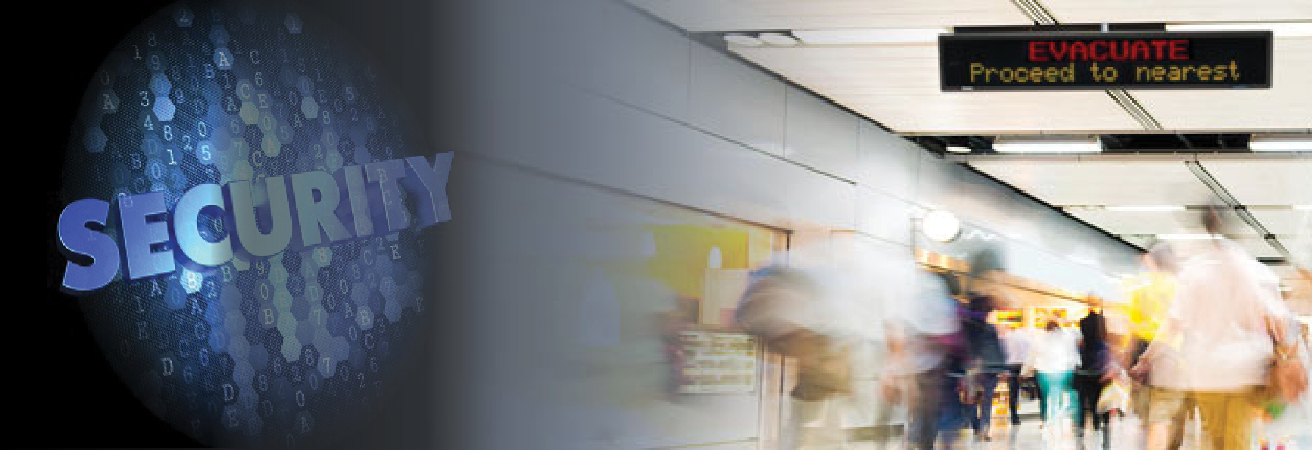Are your most valuable assets as protected as they can be? The number one asset of any organization is its people. Without them nothing can be accomplished and in today’s world these assets are continually at risk. From mother nature to man-made occurrences, organizations owe it to their employees to provide as much protection as possible during these events.
A modern Mass Notification Emergency Communication (MNEC) system can be developed that provides intelligent audio, visual notification, email, text, voicemail, and even listening abilities to a facility that were never imagined just 5 years ago. Traditional fire alarm and security systems are no longer consider the adequate for protecting employees. Doing so requires input from multiple portions of an organization.
MNEC is not a system that can be implemented by one department of a company, it requires a top down commitment due to the integrated nature of the system. Without complete cooperation and input from audio visual, IT, security, and facilities you will inherently limit the scope and abilities of the system.
In order to implement a complete and effective MNEC system, you will need to try and plan for all of the events that might occur to your employees and provide a system that is flexible enough for those events that you could never anticipate. This flexibility and the interactive nature of a properly implemented MNEC system requires detailed integration into the daily lives of your employees. Without a thorough understanding of the operation by every employee, the intended results of a MNEC system would be pointless.
So what is a MNEC system?
MNEC systems are specified in NFPA 72. According to the National Fire Protection Association “NFPA 72 provides the latest safety provisions to meet society’s changing fire detection, signaling, and emergency communications demands. In addition to the core focus on fire alarm systems, the Code includes requirements for mass notification systems used for weather emergencies; terrorist events; biological, chemical, and nuclear emergencies; and other threats.”
More specifically, a well designed and implemented MNEC system contains some if not all of the following systems; all implemented to work interactively to provide communication to employees as quickly and effectively as possible.
- Audible Notification – This is the basis of most traditional fire alarm systems, but in a MNEC system these speakers must provide audible and intelligible voice notifications. The system must be addressable and can contain automated and customer notifications. The goal is to provide safe and intelligent direction to employees.
- Mass Texts, Emails, and Phone Robot – Consists of a combination of hardware and software programs that mass notify internal and external people via text, emails, and automated phone – this represents the second line of communication. To provide an effective system, a complete and working cellular network must exist; thus in most cases requiring a Distributed Antenna System/In Building Wireless system.
- Health/Wellbeing Safety Applications – Software/cloud based that employees and guest can opt into for immediate feedback via their mobile devices.
- Desktop Alerts – Network based notifications that override any currently running applications with popup details of current situations.
- Digital Signage – Internal and external signage that displays emergency messages when required, but also provides internal day to day communication as an additional benefit. Digital signage is a key integral part for providing real time updated information in a format that can be easier to understand in a crisis than audible alarms.
- Employee Locationing – Not as well understood as some systems, but an employee locationing system provides management with the ability to know where employees might be congregating and allow for emergency notifications to be targeted at specific locations.
- Conference/Training Notification – A large part of an employee’s time can be spent in meetings and/or training. The ability to provide alerts via the video conferencing and training projection systems allows for notification of these employees who might not have their phones or PC’s with them.
- Lighting Control – Lighting can be used to light specific egress paths or is turned off or strobed as deterrent to intruders. Visual change in lighting can be used to be a first alert before providing audible information of what the situation is.
- Building Management Systems – Some emergencies can be internally generated by existing systems. Integration with the BMS systems allows for the ability to immediately know what the crisis is, and notify both internal and external contacts as required.
- Two Way Communication – Listening/Seeing is just as important in some cases as notifying. Having the ability to hear and see what is occurring in a facility, allows for more intelligent decisions and notification of employees. Integration with CCTV systems can provide the insight needed to reduce overreaction and minimize a crisis’s impact.
- Access Control – Controlling the doors of a facility and opening or closing them as needed depends on the information obtained from various sources, making these systems critical to the handling of a crisis.
As can be seen by the many methods of recognizing and controlling situations combined with keeping employees informed, a complete and well implemented MNEC system requires the integration of multiple systems within an organization, as well as the input, cooperation, and management of many departments.
Miller works with leading manufacturers across all industries required to implement an effective MNEC system based upon the NFPA 72 code. Although the code places guidelines on how to implement each portion of a complete system, integration of the systems requires a detailed understanding of the organization’s operations and desires.
Protection of employees requires a commitment from the owner and an integrator willing to invest in the planning, implementation, training, and maintenance for the betterment of their organizations. As an 88 year old organization that is committed to the safety of our own employees, Miller can provide both the technical knowledge and the interactive operational knowledge to assist organizations that desire to provide the safest work environment possible.
